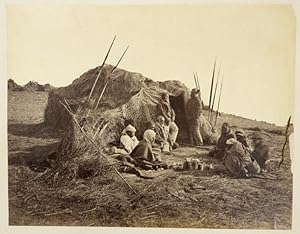sweet samuel (41 Ergebnisse)
FeedbackSuchfilter
Produktart
- Alle Product Types
- Bücher (33)
- Magazine & Zeitschriften (Keine weiteren Ergebnisse entsprechen dieser Verfeinerung)
- Comics (Keine weiteren Ergebnisse entsprechen dieser Verfeinerung)
- Noten (Keine weiteren Ergebnisse entsprechen dieser Verfeinerung)
- Kunst, Grafik & Poster (Keine weiteren Ergebnisse entsprechen dieser Verfeinerung)
- Fotografien (8)
- Karten (Keine weiteren Ergebnisse entsprechen dieser Verfeinerung)
- Manuskripte & Papierantiquitäten (Keine weiteren Ergebnisse entsprechen dieser Verfeinerung)
Zustand Mehr dazu
- Neu (26)
- Wie Neu, Sehr Gut oder Gut Bis Sehr Gut (2)
- Gut oder Befriedigend (4)
- Ausreichend oder Schlecht (Keine weiteren Ergebnisse entsprechen dieser Verfeinerung)
- Wie beschrieben (9)
Weitere Eigenschaften
- Erstausgabe (1)
- Signiert (Keine weiteren Ergebnisse entsprechen dieser Verfeinerung)
- Schutzumschlag (Keine weiteren Ergebnisse entsprechen dieser Verfeinerung)
- Angebotsfoto (21)
Sprache (2)
Preis
- Beliebiger Preis
- Weniger als EUR 20 (Keine weiteren Ergebnisse entsprechen dieser Verfeinerung)
- EUR 20 bis EUR 45
- Mehr als EUR 45
Gratisversand
Land des Verkäufers
Verkäuferbewertung
-
Golden Stories A Selection of the Best Fiction by the Foremost Writers Classic Reprint
Anbieter: PBShop.store US, Wood Dale, IL, USA
EUR 23,26
Währung umrechnenEUR 0,60 für den Versand von USA nach DeutschlandAnzahl: 15 verfügbar
In den WarenkorbPAP. Zustand: New. New Book. Shipped from UK. Established seller since 2000.
-
Practical Elocution: Containing Illustrations of the Principles of Reading and Public Speaking (Classic Reprint)
Anbieter: PBShop.store US, Wood Dale, IL, USA
EUR 24,44
Währung umrechnenEUR 0,65 für den Versand von USA nach DeutschlandAnzahl: 15 verfügbar
In den WarenkorbPAP. Zustand: New. New Book. Shipped from UK. Established seller since 2000.
-
EUR 24,79
Währung umrechnenKostenlos für den Versand innerhalb von/der DeutschlandAnzahl: Mehr als 20 verfügbar
In den WarenkorbZustand: New. KlappentextrnrnThis is a reproduction of the original artefact. Generally these books are created from careful scans of the original. This allows us to preserve the book accurately and present it in the way the author intended. Since the origina.
-
Practical Elocution Containing Illustrations of the Principles of Reading and Public Speaking Also a Selection of the Best Pieces From Ancient and to the Purposes of Improvement in Read
Anbieter: PBShop.store UK, Fairford, GLOS, Vereinigtes Königreich
EUR 21,57
Währung umrechnenEUR 4,52 für den Versand von Vereinigtes Königreich nach DeutschlandAnzahl: 15 verfügbar
In den WarenkorbPAP. Zustand: New. New Book. Shipped from UK. Established seller since 2000.
-
EUR 26,04
Währung umrechnenKostenlos für den Versand innerhalb von/der DeutschlandAnzahl: Mehr als 20 verfügbar
In den WarenkorbZustand: New. KlappentextrnrnThis is a reproduction of the original artefact. Generally these books are created from careful scans of the original. This allows us to preserve the book accurately and present it in the way the author intended. Since the origina.
-
Golden Stories: A Selection of the Best Fiction by the Foremost Writers (Classic Reprint)
Anbieter: PBShop.store UK, Fairford, GLOS, Vereinigtes Königreich
EUR 24,99
Währung umrechnenEUR 4,52 für den Versand von Vereinigtes Königreich nach DeutschlandAnzahl: 15 verfügbar
In den WarenkorbHRD. Zustand: New. New Book. Shipped from UK. Established seller since 2000.
-
EUR 24,51
Währung umrechnenEUR 5,72 für den Versand von Vereinigtes Königreich nach DeutschlandAnzahl: Mehr als 20 verfügbar
In den WarenkorbZustand: New. In.
-
Practical Elocution: Containing Illustrations of the Principles of Reading and Public Speaking (Classic Reprint)
Anbieter: PBShop.store UK, Fairford, GLOS, Vereinigtes Königreich
EUR 25,79
Währung umrechnenEUR 4,52 für den Versand von Vereinigtes Königreich nach DeutschlandAnzahl: 15 verfügbar
In den WarenkorbHRD. Zustand: New. New Book. Shipped from UK. Established seller since 2000.
-
Practical Elocution: Containing Illustrations of the Principles of Reading and Public Speaking; Also a Selection of the Best Pieces From Ancient and Modern Authors, Accompanied by Explanatory Notes; The Whole Adapted to the Purposes of Improvement in Read
Anbieter: PBShop.store UK, Fairford, GLOS, Vereinigtes Königreich
EUR 26,22
Währung umrechnenEUR 4,52 für den Versand von Vereinigtes Königreich nach DeutschlandAnzahl: 15 verfügbar
In den WarenkorbHRD. Zustand: New. New Book. Shipped from UK. Established seller since 2000.
-
Sets, Relations, Functions.
Verlag: McGraw-Hill, New York, 1969
Sprache: Englisch
Anbieter: Antiquariat Silvanus - Inhaber Johannes Schaefer, Ahrbrück, Deutschland
cond Edition,. 380 S. mit zahlreichen Figuren, Sprache: Englisch Gewicht in Gramm: 700 Groß 8°, Bibliotheks-Exemplar (ordnungsgemäß entwidmet) mit Rückenschild, Stempel auf Titel, Einband in selbstklebende transparente Schutzfolie eingeschlagen, insgesamt gutes und innen sauberes Exemplar,
-
EUR 32,79
Währung umrechnenEUR 5,72 für den Versand von Vereinigtes Königreich nach DeutschlandAnzahl: Mehr als 20 verfügbar
In den WarenkorbZustand: New. In.
-
Practical Elocution: Containing Illustrations of the Principles of Reading and Public Speaking
Anbieter: moluna, Greven, Deutschland
EUR 42,12
Währung umrechnenKostenlos für den Versand innerhalb von/der DeutschlandAnzahl: Mehr als 20 verfügbar
In den WarenkorbGebunden. Zustand: New. KlappentextThis work has been selected by scholars as being culturally important, and is part of the knowledge base of civilization as we know it. This work was reproduced from the original artifact, and remains as true to the original w.
-
The Highest of All Mountains: A Guide for Christians Seeking Peace and Becoming Peacemakers
Anbieter: Revaluation Books, Exeter, Vereinigtes Königreich
EUR 39,01
Währung umrechnenEUR 11,48 für den Versand von Vereinigtes Königreich nach DeutschlandAnzahl: 2 verfügbar
In den WarenkorbHardcover. Zustand: Brand New. 164 pages. 5.50x0.44x8.50 inches. In Stock.
-
EUR 53,87
Währung umrechnenEUR 11,48 für den Versand von Vereinigtes Königreich nach DeutschlandAnzahl: 2 verfügbar
In den WarenkorbPaperback. Zustand: Brand New. 288 pages. 9.00x6.00x0.79 inches. In Stock.
-
EUR 57,80
Währung umrechnenEUR 26,33 für den Versand von Japan nach DeutschlandAnzahl: 1 verfügbar
In den WarenkorbZustand: New. 08/2016.
-
Wit and Humor of the Age, Comprising Wit, Humor, Pathos, Ridicule, Satires, Dialects, Puns, Conundrums, Riddles, Charades, Jokes and Magic, with the Philosophy of Wit and Humor.
Verlag: San Francisco: Law, King & Law, 1884
Anbieter: Books From California, Simi Valley, CA, USA
EUR 66,69
Währung umrechnenEUR 12,52 für den Versand von USA nach DeutschlandAnzahl: 1 verfügbar
In den WarenkorbHardcover. Zustand: Very Good. Illustrated cloth cover shows minor wear, tear, rubbing, edgewear, and soiling. Decorative endpapers and marbled edges. Illustrated frontis portraits of the 5 primary authors. Pages are lightly tanned and mostly clean.
-
Notable South Australians; or, Colonists - Past and Present
Verlag: Carey, Page & Co., Printers ('Published under the Author's own immediate Supervision'), Adelaide, 1885
Anbieter: Michael Treloar Booksellers ANZAAB/ILAB, Adelaide, SA, Australien
Erstausgabe
EUR 230,27
Währung umrechnenEUR 18,56 für den Versand von Australien nach DeutschlandAnzahl: 1 verfügbar
In den WarenkorbHardcover. Zustand: Very Good. First Edition. Adelaide, Carey, Page & Co., Printers ('Published under the Author's own immediate Supervision'), 1885. Octavo, viii, 288, [24] (local advertisements) pages plus 17 lithographs (a frontispiece view after J.M. Skipper, 15 individual portrait illustrations, and one plate containing three portraits) and 2 mounted albumen paper portrait photographs. Mid-brown stippled cloth lettered and decorated in gilt on the spine; cloth a little marked and lightly worn at the corner tips; spine sunned; inner hinges cracked but firm; endpapers offset, with the leading half of the rear flyleaf neatly excised; name-stamp or signature on four early pages (with an old price in ink on the flyleaf and initial blank); a very good copy (internally excellent). The photographs are of Captain Samuel White Sweet (130 × 71 mm, presumably a self-portrait), and George Loyau (98 × 58 mm, credited in the negative to George & Walton: he is facing the camera, with his head turned a little to the left). This is another variant (see Holden 71) of an item usually found with the author's photograph only (and to further complicate matters, the latter occurs in at least three variant forms as well!). In our experience, this issue with the portrait of Samuel Sweet is most uncommon. Captain Samuel White Sweet (1825-1886, sea captain, surveyor and photographer) took command in January 1869 'of the two-masted schooner "Gulnare", which was later bought by the South Australian government for the Northern Territory survey expedition'. Between February 1869 and April 1872, he made five trips to the Northern Territory. 'In September [1870] in Darwin he photographed the official party at the ceremonial planting of the first pole of the overland telegraph; he also took pictures of the township, the men at work and forest scenery.' He spent the next three years as a master mariner based in Adelaide until 11 May 1875, when 'his ship the "Wallaroo", with his wife aboard, ran aground in a gale on Office Beach, Wallaroo. An inquiry attributed it to Sweet's error of judgment, and he was censured. He retired from the sea, opened a photographic studio in Adelaide and concentrated on landscapes. With his horse-drawn dark room he travelled through South Australia taking hundreds of skilful pictures of the outback, stations and homesteads. The colony's foremost documentary photographer of the 1870s, in the early 1880s he was one of the first to use the new dry-plate process' ('Australian Dictionary of Biography').
-
A vintage nineteenth-century photograph of Adelaide, taken from the Post Office Tower looking towards North Adelaide
Anbieter: Michael Treloar Booksellers ANZAAB/ILAB, Adelaide, SA, Australien
Fotografie
EUR 172,70
Währung umrechnenEUR 18,56 für den Versand von Australien nach DeutschlandAnzahl: 1 verfügbar
In den WarenkorbZustand: Very Good. An albumen paper photograph (159 × 205 mm); tiny quarter-round indentations to the bottom corners (a legacy of having been tipped in on a mount at some stage); slight fading around the edges; now unmounted and in excellent condition. The photograph shows the eastern side of a fairly quiet King William Street; the clockless tower of the Town Hall has a prominent position to the right of the image. Captain Samuel White Sweet (1825-1886), was a sea captain, surveyor and photographer: after he was censured when his ship ran aground in 1875, he 'retired from the sea, opened a photographic studio in Adelaide and concentrated on landscapes. With his horse-drawn dark room he travelled through South Australia taking hundreds of skilful pictures of the outback, stations and homesteads. The colony's foremost documentary photographer of the 1870s, in the early 1880s he was one of the first to use the new dry-plate process' ('Australian Dictionary of Biography').
-
A vintage nineteenth-century photograph of Adelaide from Kent Town
Anbieter: Michael Treloar Booksellers ANZAAB/ILAB, Adelaide, SA, Australien
Fotografie
EUR 172,70
Währung umrechnenEUR 18,56 für den Versand von Australien nach DeutschlandAnzahl: 1 verfügbar
In den WarenkorbZustand: Very Good. An albumen paper photograph (158 × 208 mm) mounted on card (a little tanned); in excellent condition. The photographer's credit and reference number ('Sweet | Adelaide | 526') is scratched in the negative. The photograph was taken from on top of the Kent Town Brewery, looking west along Rundle Street across the parklands, taking in all to the right (north) as far as the old Royal Adelaide Hospital and the dome of the Palm House in the Adelaide Botanic Gardens. Captain Samuel White Sweet (1825-1886), was a sea captain, surveyor and photographer: after he was censured when his ship ran aground in 1875, he 'retired from the sea, opened a photographic studio in Adelaide and concentrated on landscapes. With his horse-drawn dark room he travelled through South Australia taking hundreds of skilful pictures of the outback, stations and homesteads. The colony's foremost documentary photographer of the 1870s, in the early 1880s he was one of the first to use the new dry-plate process' ('Australian Dictionary of Biography').
-
Vintage nineteenth-century photographs of the City Bridge across the River Torrens on King William Road, and a view along the same stretch of road (looking south from North Adelaide), mounted back-to-back on a card leaf detached from an album
Anbieter: Michael Treloar Booksellers ANZAAB/ILAB, Adelaide, SA, Australien
Fotografie
EUR 230,27
Währung umrechnenEUR 18,56 für den Versand von Australien nach DeutschlandAnzahl: 1 verfügbar
In den WarenkorbAlbumen paper photographs (each approximately 157 × 207 mm); the road scene has been printed from a broken negative, and a hairline crack and small fingerprint are visible in the central portion of the sky; the top margin of the mount on this side has some spots of residual glue, and the bottom edge of the mount on the other side has a few trifling surface chips; overall, the condition is excellent. The photographer's credit and reference number ('Sweet | Adelaide | 335') is scratched in the negative of the City Bridge (the second bridge built over the Torrens at that spot, in 1877). Oarsmen in four boats in the foreground have clearly paused for the event, as have the numerous pedestrians on the bridge. The second photograph shows Adelaide's twin towers - the Town Hall and the GPO - in the distance, but the most prominent features of the scene are the tall eucalypts lining the road, and the cart-horses drinking at a shaded trough. Captain Samuel White Sweet (1825-1886), was a sea captain, surveyor and photographer: after he was censured when his ship ran aground in 1875, he 'retired from the sea, opened a photographic studio in Adelaide and concentrated on landscapes. With his horse-drawn dark room he travelled through South Australia taking hundreds of skilful pictures of the outback, stations and homesteads. The colony's foremost documentary photographer of the 1870s, in the early 1880s he was one of the first to use the new dry-plate process' ('Australian Dictionary of Biography').
-
View of the interior of the Adelaide Arcade, December 1885.
Anbieter: Douglas Stewart Fine Books, Armadale, VIC, Australien
EUR 230,27
Währung umrechnenEUR 31,94 für den Versand von Australien nach DeutschlandAnzahl: 1 verfügbar
In den WarenkorbAlbumen print photograph, 160 x 223 mm, with 'Sweet, Adelaide' in manuscript in negative at bottom edge left of centre; laid down on its original mount of thickish card, captioned 'Arcade' in red ink below the image; the tones are a little dark (to be expected) but the image contains a wealth of detail such as store-fronts and signage, and shopkeepers and patrons, among whom, half way down the arcade on the left, is almost certainly the building's caretaker Francis Cluney in his distinctive top hat and smart white coat; the print is in fine condition, as is the mount. The Adelaide Arcade was opened on 12 December 1885, and this view is one of several that Sweet took around this time of the building's magnificent interior. The arcade had electric lighting - one of the first Adelaide buildings to do so.
-
Vintage nineteenth-century photographs of Victoria Square, Adelaide (featuring the Supreme Court), and the city from Montefiore Hill, mounted back-to-back on a card leaf detached from an album
Anbieter: Michael Treloar Booksellers ANZAAB/ILAB, Adelaide, SA, Australien
Fotografie
EUR 316,62
Währung umrechnenEUR 18,56 für den Versand von Australien nach DeutschlandAnzahl: 1 verfügbar
In den WarenkorbZustand: Fine. Albumen paper photographs (each approximately 157 × 207 mm), in fine condition; the mount has a few trifling blemishes. The first photograph appears to be taken from the top of the (old) Treasury Building, looking south-west across the square at the imposing Supreme Court building, still extant. The second photograph is a panoramic view of the city skyline, centred on the towers of the Town Hall and the GPO; a tall chimney on the riverbank, pouring out black smoke, stands visually between them. Captain Samuel White Sweet (1825-1886), was a sea captain, surveyor and photographer: after he was censured when his ship ran aground in 1875, he 'retired from the sea, opened a photographic studio in Adelaide and concentrated on landscapes. With his horse-drawn dark room he travelled through South Australia taking hundreds of skilful pictures of the outback, stations and homesteads. The colony's foremost documentary photographer of the 1870s, in the early 1880s he was one of the first to use the new dry-plate process' ('Australian Dictionary of Biography').
-
Vintage nineteenth-century photographs of the Bank of South Australia and the Royal Adelaide Hospital, mounted back-to-back on a card leaf detached from an album
Anbieter: Michael Treloar Booksellers ANZAAB/ILAB, Adelaide, SA, Australien
Fotografie
EUR 316,62
Währung umrechnenEUR 18,56 für den Versand von Australien nach DeutschlandAnzahl: 1 verfügbar
In den WarenkorbZustand: Fine. Albumen paper photographs (each approximately 157 × 207 mm), in fine condition; the mount has a few trifling blemishes. The Bank of South Australia building still stands on King William Street, Adelaide. The photographer's credit and reference number ('Sweet | Adelaide | 92') is scratched in the negative. The imposing hospital buildings, now demolished, are photographed from an elevated vantage point (probably the roof of the Botanic Hotel across North Terrace), and the wide-angled view shows a sparsely-developed city now lost to history. The reference to Sweet was painted out in the original negative before this print was made, suggesting it may be a posthumous print. Captain Samuel White Sweet (1825-1886), was a sea captain, surveyor and photographer: after he was censured when his ship ran aground in 1875, he 'retired from the sea, opened a photographic studio in Adelaide and concentrated on landscapes. With his horse-drawn dark room he travelled through South Australia taking hundreds of skilful pictures of the outback, stations and homesteads. The colony's foremost documentary photographer of the 1870s, in the early 1880s he was one of the first to use the new dry-plate process' ('Australian Dictionary of Biography').
-
A vintage full-plate albumen paper photograph of a group of fourteen Ngarrindjeri [Narrinyeri] men at the graveside of the Reverend George Taplin at Point McLeay, South Australia
Anbieter: Michael Treloar Booksellers ANZAAB/ILAB, Adelaide, SA, Australien
Fotografie
EUR 431,76
Währung umrechnenEUR 18,56 für den Versand von Australien nach DeutschlandAnzahl: 1 verfügbar
In den WarenkorbGeorge Taplin (1831-1879), missionary and teacher, began his work with the Ngarrindjeri in April 1859; the 'site he chose for a settlement on the shores of Lake Alexandrina was a traditional camping ground called Raukkan (The Ancient Way), known to Europeans as Point McLeay. Keenly interested in Ngarrindjeri culture and society, he learned their language, used it in preaching, and translated and published Bible tracts. He published invaluable anthropological studies which were much superior to contemporary work on South Australian Aboriginals. Despite his sympathy with the people and their traditions, Taplin adhered to the contemporary view that Christianity and Europeanization should be adopted and Ngarrindjeri civilization abandoned; as a result he assisted in undermining their government and social structure, further weakened traditional discipline and morale within the confederacy and provoked strong opposition from conservative tribal members. But they had been dispossessed and persecuted before his arrival, and by helping them become literate and numerate and to acquire trades he enabled them to survive and flourish briefly in European society. Today hundreds of their descendants remain in various districts of Australia; their durability can largely be attributed to Taplin. He was a compassionate Christian and a courageous fighter. Exhausted, he died of heart disease at Raukkan on 24 June 1879, survived by his wife and six children. He was buried in the village cemetery' ('Australian Dictionary of Biography'). The photograph (163 × 220 mm) shows the newly-installed headstone, which was 'Erected By The Aborigines'. It is on the original mount, captioned along the bottom margin 'S.W. Sweet, Photo., Flinders Street, Adelaide'. The acidic mount is discoloured, lightly stained and unevenly trimmed; the top right-hand corner is broken away, taking with it a small triangular piece of the photograph (approximately 10 × 45 mm of the sky); the sepia-toned print is a little speckled (confined mainly to the left and right margins), but overall it is a very arresting image. The only example recorded in Trove, in the State Library of SA, appears to be of better quality, but it is not for sale, and more importantly, the photographer is not identified. This significant fact may now be added to the record. Captain Samuel White Sweet (1825-1886), was a sea captain, surveyor and photographer: after he was censured when his ship ran aground in 1875, he 'retired from the sea, opened a photographic studio in Adelaide and concentrated on landscapes. With his horse-drawn dark room he travelled through South Australia taking hundreds of skilful pictures of the outback, stations and homesteads. The colony's foremost documentary photographer of the 1870s, in the early 1880s he was one of the first to use the new dry-plate process' ('Australian Dictionary of Biography').
-
An informal cricket match in progress on the banks of the River Angas, Strathalbyn, South Australia, c.1880.
Anbieter: Douglas Stewart Fine Books, Armadale, VIC, Australien
EUR 431,76
Währung umrechnenEUR 31,94 für den Versand von Australien nach DeutschlandAnzahl: 1 verfügbar
In den WarenkorbAlbumen print photograph, 160 x 205 mm, laid down on the recto of a nineteenth-century album leaf of thick card, the mount inscribed in pencil by the album's compiler 'Strathalbyn'; a strong print with excellent clarity, in fine condition; verso with a view of King William Street, Adelaide (also by Sweet), in good condition; a few spots of foxing to the margins on both sides of the mount. A scarce early photographic image of colonial cricket.
-
Banyan trees and bush near Palmerston (Port Darwin), Northern Territory, c.1870
Anbieter: Douglas Stewart Fine Books, Armadale, VIC, Australien
EUR 518,11
Währung umrechnenEUR 31,94 für den Versand von Australien nach DeutschlandAnzahl: 1 verfügbar
In den WarenkorbTwo albumen print photographs, in identical 160 x 220 mm format, mounted recto and verso of a nineteenth-century album leaf of thick card, recto inscribed in pencil below the image by the album's compiler 'Banyan trees', verso without caption; both are strong prints with excellent clarity, in fine condition; a few spots of foxing to the margins on both sides of the mount. From the ADB: 'Samuel White Sweet (1825-1886), sea captain, surveyor and photographer, was born on 1 May 1825 at Portsea, Hampshire, England. He probably joined the navy in 1844, served on the China Station for five years and had several voyages to India. In 1858-62 as commander of thePizarrohe kept the meteorological log for the Board of Trade, and in 1861 he surveyed Peña Blanca harbour, South America. He had spent six years working for N. J. Myers Son & Co. of Liverpool as a master, his last ship being theSarah Neumann. About 1863 he spent two years in Queensland, hoping to grow cotton; in 1867 he moved to Rundle Street, Adelaide, and worked as a photographer. In January 1869 Sweet took command of the two-masted schoonerGulnare, which was later bought by the South Australian government for the Northern Territory survey expedition. He sailed from Adelaide on 12 February, returning in June, and again in February 1870 to collect more supplies. He also visited Timor and returned to Palmerston (Darwin) on 15 September with eighteen buffaloes, ponies, monkeys, fruit and vegetables. In September in Darwin he photographed the official party at the ceremonial planting of the first pole of the overland telegraph; he also took pictures of the township, the men at work and forest scenery.'.
-
A vintage photograph of Poonindie Mission Station, 1884 ('Mr Satow taken with the school children outside the Church, Poonindie Mission May 1884')
Anbieter: Michael Treloar Booksellers ANZAAB/ILAB, Adelaide, SA, Australien
Fotografie
EUR 1.439,19
Währung umrechnenEUR 18,56 für den Versand von Australien nach DeutschlandAnzahl: 1 verfügbar
In den WarenkorbOriginal sepia-toned albumen paper photograph (158 × 210 mm), unmounted as issued; in fine condition. Captain Samuel White Sweet (1825-1886), sea captain, surveyor and photographer: after he was censured when his ship ran aground in 1875, he 'retired from the sea, opened a photographic studio in Adelaide and concentrated on landscapes. With his horse-drawn dark room he travelled through South Australia taking hundreds of skilful pictures of the outback, stations and homesteads. The colony's foremost documentary photographer of the 1870s, in the early 1880s he was one of the first to use the new dry-plate process' ('Australian Dictionary of Biography'). 'Sweet | Adelaide | ***' is inscribed in the negative (the three-digit reference number is cropped, but it appears to be 442 or 443); 'Poonindie native mission school' is written in pencil on the verso. The Art Gallery of South Australia and the State Library of Victoria also have an example of this print. There are several differences between all these three examples: they are different enlargements; the AGSA example does not have the photographer's credit in the negative; the SLV example does, but the negative is printed in reverse. 'Captain Sweet's Colonial Imagination - The Ideals of Modernity in South Australian Views Photography, 1866-1886' by Karen Magee (a 2014 University of Adelaide doctoral thesis, accessible online) records that Sweet visited Poonindie in 1884. Magee reproduces the AGSA photograph in her extensive catalogue (see number 820).
-
Two vintage photographs of Point McLeay Aboriginal Mission Station, 1878 (a fine group portrait, and a display of Ngarrindjeri weapons and artefacts)
Anbieter: Michael Treloar Booksellers ANZAAB/ILAB, Adelaide, SA, Australien
Fotografie
EUR 2.590,54
Währung umrechnenEUR 18,56 für den Versand von Australien nach DeutschlandAnzahl: 1 verfügbar
In den WarenkorbOriginal sepia-toned albumen paper photographs (both 158 × 208 mm), unmounted as issued; short sealed tear to the bottom corner of the photograph of weapons; essentially in fine condition. Captain Samuel White Sweet (1825-1886), sea captain, surveyor and photographer: after he was censured when his ship ran aground in 1875, he 'retired from the sea, opened a photographic studio in Adelaide and concentrated on landscapes. With his horse-drawn dark room he travelled through South Australia taking hundreds of skilful pictures of the outback, stations and homesteads. The colony's foremost documentary photographer of the 1870s, in the early 1880s he was one of the first to use the new dry-plate process' ('Australian Dictionary of Biography'). 'Point McLeay Mission was founded on the shores of Lake Alexandrina in 1859 by the Aborigines' Friends Association for the Aboriginal people of the Lower Lakes. George Taplin, the Congregational minister, was its first administrator. Following Government administration from 1916, Point McLeay was returned to the Ngarrindjeri people in 1974 and renamed Raukkan in 1982' (State Library of South Australia). The group portrait depicts 55 Indigenous men, women and children posed in five rows in front of one of the thatch-roofed residential cottages at Point McLeay. 'Sweet | Adelaide | 463' is inscribed in the negative; 'Native Mission Station | Ponindie [sic]' is written in pencil (and in error) on the verso. The photograph of weapons and artefacts is inscribed 'Sweet | Adelaide | 462' in the negative, and has an early caption in pencil on the verso ('Native Ornaments & Weapons'). The objects, numbered 1 to 17 in the negative, are displayed against a whitewashed wall of one of the cottages. We have traced only one example of the latter photograph in Trove (in the National Library of Australia), and none of the group portrait. 'Captain Sweet's Colonial Imagination - The Ideals of Modernity in South Australian Views Photography, 1866-1886' by Karen Magee (a 2014 University of Adelaide doctoral thesis, accessible online) notes that Sweet visited Point McLeay in 1878 and 1880. She reproduces the latter photograph in her extensive catalogue (see number 811, '"Ngarrindjeri weapons and hunting implements," 1878, Point McLeay. Private Collection'), but does not record the group portrait. [2 items].
-
Aboriginal camp, Point McLeay, South Australia, 1880
Anbieter: Douglas Stewart Fine Books, Armadale, VIC, Australien
EUR 690,81
Währung umrechnenEUR 31,94 für den Versand von Australien nach DeutschlandAnzahl: 1 verfügbar
In den WarenkorbAlbumen print photograph, 170 x 210 mm, mounted on a contemporary album page of thick card, inscribed in negative at lower left Sweet Adelaide 455, a very strong print in excellent condition with rich tonal range, small section of loss to surface of the paper at right edge. The National Library of Australia's copy of this, one of Captain Sweet's best known photographs of Aborigines, is captioned 'Blacks whurlie'. Although the NLA dates their copy to 1870, the photograph was in fact one of a highly successful series of portraits of Ngarrindjeri people Captain Sweet took in and around the Point McLeay mission late in 1880: Sweet's number scratched into the negative shows it is from the same sequence of photographs as the celebrated individual portraits of a man in a possum skin cloak and a woman in a possum skin cloak carrying her baby. (See the short essay by Philip Jones in A century in focus : South Australian photography 1840s-1940s, edited by Julie Robinson and Maria Zagala, Adelaide : Art Gallery of South Australia, 2007, p 116).





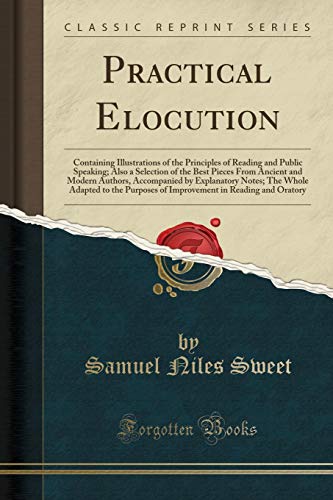


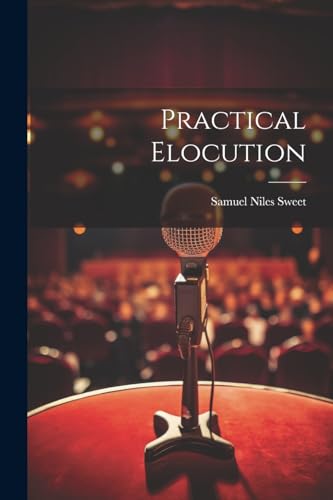




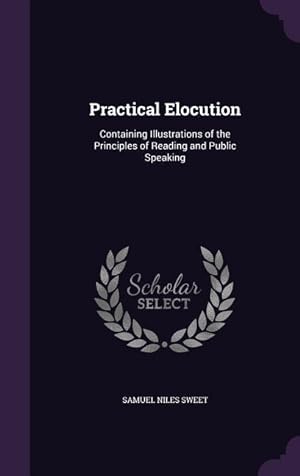


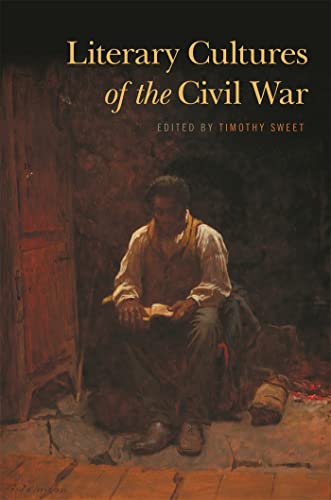

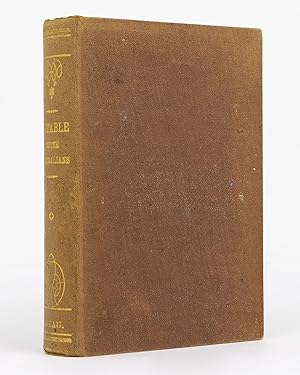
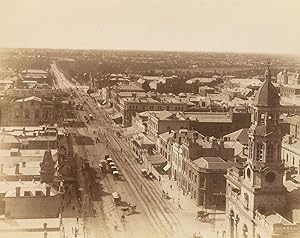
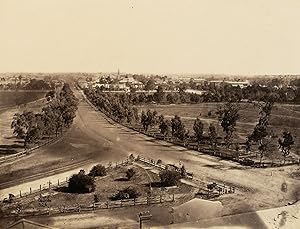

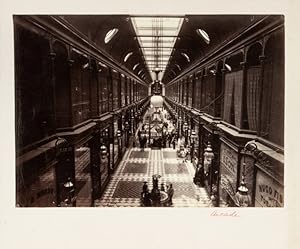
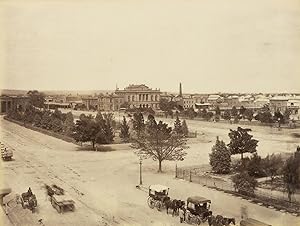
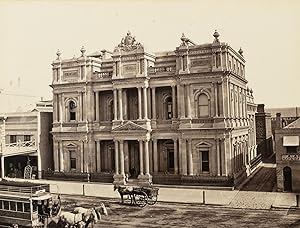
![Bild des Verkäufers für A vintage full-plate albumen paper photograph of a group of fourteen Ngarrindjeri [Narrinyeri] men at the graveside of the Reverend George Taplin at Point McLeay, South Australia zum Verkauf von Michael Treloar Booksellers ANZAAB/ILAB](https://pictures.abebooks.com/inventory/md/md30412988603.jpg)




